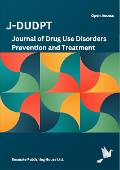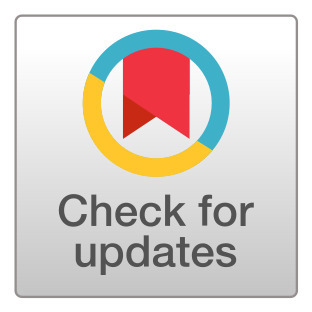
Journal of Drug Use Disorders Prevention and Treatment
Online ISSN: --
Emanatae Publishing House Ltd.
Correction and Retraction Policies
Version of Record (VoR)
Once an article is published in its final, citable form by the Journal of Drug Use Disorders, Prevention, and Treatment (J-DUDPT), it is considered the Version of Record (VoR). This version represents the definitive, peer-reviewed, and formally published article. It is the version that readers, researchers, and indexers can rely upon as accurate and complete.
For J-DUDPT, which operates as an open access, continuous publication journal, the VoR is defined as:
- The first public release of the article online, including a DOI and formal citation, and
- Any subsequent updates such as corrigenda, errata, or other formal notices linked to the article.
J-DUDPT is committed to maintaining the integrity, discoverability, and transparency of the scholarly record. Post-publication updates are made carefully and in alignment with COPE guidelines and best practices in academic publishing.
Post-Publication Corrections
Although every effort is made during peer review and proofing to ensure accuracy, errors may occasionally be identified after publication. Post-publication notices may be issued to address:
- Substantive errors or omissions that affect comprehension, indexing, or policy compliance.
- Errors that raise concerns about the article’s validity or integrity.
- Editorial or production errors introduced during publication.
Changes to published articles are reviewed by the editorial team and are made at the discretion of the Editor-in-Chief and the publisher, in accordance with COPE guidance.
Correction Notices
A correction notice will be published when it becomes necessary to clarify or amend a previously published article. This may take the form of an erratum when the error originated during the publication process, or a corrigendum when the error was introduced by the authors.
Each correction notice will provide a clear explanation of the changes made, ensuring transparency for readers. It will be directly linked to the original article and will also include a corresponding note within the article's PDF and HTML versions to indicate the corrected content.
For minor corrections—such as typographical or formatting errors that do not affect the understanding or interpretation of the article—a simple footnote within the corrected version may suffice, and a separate correction notice may not be necessary.
Concerns Related to Validity or Integrity
Publisher will investigate any reported concerns about published content in accordance with our Complaints and Appeals Policy and COPE guidelines. This includes potential:
- Data manipulation or fabrication.
- Ethical or legal violations.
- Plagiarism or authorship issues.
Expression of Concern
An Expression of Concern may be published when:
- There are serious but unresolved concerns about the article’s integrity.
- Misconduct is suspected but not yet confirmed.
- An investigation is ongoing and conclusive findings are not yet available.
The Expression of Concern will be publicly posted and directly linked to the original article. While authors will be notified of its publication, the journal does not require their approval to proceed with issuing the notice. Depending on the outcome of the investigation, the Expression of Concern may later be updated, replaced by a corrigendum or retraction, or remain in place indefinitely if the matter cannot be conclusively resolved.
Publisher reserves the right to notify authors’ institutions, funding agencies, or other journals if warranted.
Retractions
Publisher may retract an article when there is clear and substantiated evidence that the integrity, validity, or ethical foundations of the research have been compromised. Retraction may be considered under the following circumstances:
- When the findings are demonstrably unreliable, whether due to academic misconduct such as data fabrication, falsification, or image manipulation, or due to honest errors such as miscalculations or flawed methodology.
- When the article represents redundant or duplicate publication, including instances where content has been previously published without appropriate citation, acknowledgment, or justification.
- When plagiarism is identified in the text, data, or ideas presented.
- When the Editor has lost confidence in the integrity or validity of the article's content or authorship.
- When there is evidence or credible suspicion that authorship has been offered for sale or was otherwise misrepresented.
- When citation manipulation is detected within the article to inappropriately influence impact metrics.
- When the peer review process has been compromised or manipulated.
- When the research violates ethical standards or demonstrates a breach of J-DUDPT’s editorial policies.
- When the authors have knowingly submitted false or misleading information, or have violated warranties made in the Author Publishing Agreement.
In cases where retraction is warranted, J-DUDPT will:
- Apply a clear “Retracted” watermark across all pages of the published Version of Record of the article.
- Publish a separate, clearly labeled retraction notice titled “Retraction: [Article Title]” that explains the reason for the retraction. This notice will be permanently linked to the retracted article and publicly available.
- Include the retraction notice within the journal’s online issue to ensure it is discoverable and citable.
The decision to retract is made jointly by the journal’s editorial leadership and the publisher, in line with COPE Retraction guidelines, and does not require the authors' consent—though authors will be notified and given an opportunity to respond.
Article Removal
Articles will only be removed in rare and legally justified cases, such as:
- Serious risk to privacy or safety.
- Legal defamation or court-ordered removal.
- Public health risks arising from factual inaccuracies.
- In such cases, a notice will replace the article to explain the reason for removal.
Corrections to Supplementary Materials and Data Files
Supplementary materials and research datasets associated with articles are considered part of the permanent scholarly record. If errors are found:
- Substantive changes will trigger a formal notice.
- Minor updates may be replaced silently, with versioning noted on the file’s front page.
- Files hosted on external repositories may follow their own versioning policies.
Crossmark Participation
As part of our commitment to transparency and maintaining a trustworthy scholarly record, the J-DUDPT participates in the Crossmark initiative by Crossref. This program enables readers to quickly verify the current status of a published article and access any updates, such as corrections, retractions, or expressions of concern.
All articles published in J-DUDPT will display the Crossmark logo below on both the HTML and PDF versions.

By clicking the Crossmark icon, readers can view a summary of the article's update history, including whether the content is current or if any changes have been made post-publication. The Crossmark pop-up also provides additional metadata about the article to support transparency in academic publishing.
This participation reinforces J-DUDPT’s commitment to preserving the accuracy and reliability of the scientific record and ensures that readers always have access to the most up-to-date version of an article.
To learn more about Crossmark, visit: https://www.crossref.org/services/crossmark/
